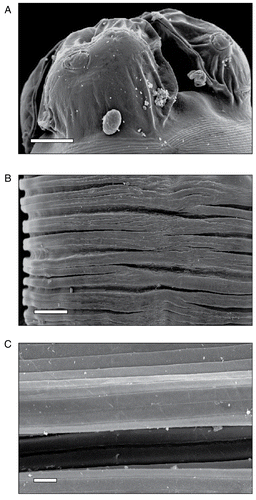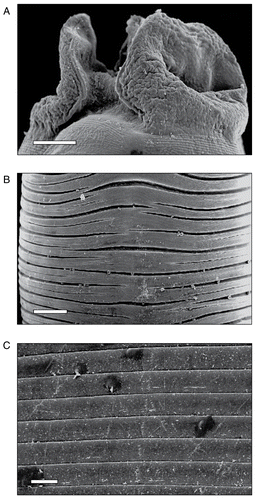Figures & data
Table 1. Concentration-dependent efficacy of albendazole and the ethanol extract of A. oxyphylla stem bark on the survival of A. galli.
Figure 1. Scanning electron micrographs of untreated control nematode A. galli. A) Anterior end showing three denticulate lips surrounding a central mouth, a latero-ventral lip facing at the center of which is a sensory papilla, × 200 (scale bar, 100 μm). B) The cuticle with distinct ridges and furrows throughout the body, × 270 (scale bar, 200 μm). C) Enlarged portion showing a series of lighter transverse striations and intercalated darker annulations, × 1,000 (scale bar, 50 μm).

Figure 2. Scanning electron micrographs of A. galli treated with 20 mg/mL of the ethanol extract of A. oxyphylla stem bark. A) Anterior end with severe deformity, lips collapsed, papillae destroyed and shrunk, and the cuticle wrinkled, × 200 (scale bar, 100 μm). B) Cuticular surface showing irregular rings bearing a number of unusual dark spots, × 270 (scale bar, 200 μm). C) Transverse rings developing external blebs as conspicuous dark blisters, and a ruptured bleb at the left bottom, × 1,000 (scale bar, 50 μm).
